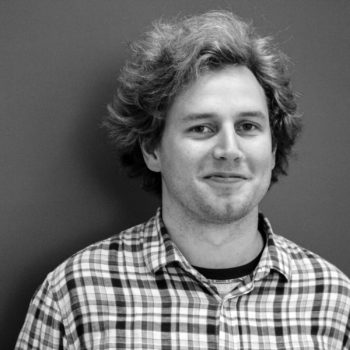Dear scientist,
Are you a professional writer?
Have you thought about it?
You probably consider writing to be an important and essential part of your work, but maybe you leave the title “professional writer” to those who have studied writing and do it for a living. For many scientists, writing is something that comes with the job, not the reason to become a scientist. But should scientists also consider themselves as professional writers?
Joshua Schimel, the author of the book “Writing Science – How to write papers that get cited and proposals that get funding” certainly thinks so; he starts the first chapter with the claim that: “as a scientist, you are a professional writer”. What a terrifying thought! But he goes on to argue that our success as scientists is not only determined by our ideas and findings, but also by whether our work gets published, read, and cited. How we write therefore truly matters – scientists who are frequently cited tend to write effectively!
To put it the other way around: have you ever read a scientific paper from your field that was hard or even impossible to follow and understand? What if it wasn’t difficult to understand because of you, but because of poor writing? Central to Schimel’s argument is the idea that it is our job as scientists to make our publications easy for others to read – to write it so well that the reader is enticed to read it from cover to cover.
This is by no means an easy task. Becoming a good and effective writer takes practice and time, and you are never finished – there is always room to learn and improve.
Writing courses for PhD students and postdocs exist, but we wonder if there should be more systematic teaching on scientific writing throughout the academic path – for example, during master’s or even bachelor’s studies? Considering the importance of good writing skills, we think scientific writing should have a larger role in our education. Effective writing, whether you stay in academia or not, is ultimately about the ability to communicate effectively – and that skill is transferable across occupations.
If you don’t have the possibility of taking a writing course, you can always read books about it. The book by Schimel, for example, entails 21 chapters that go into detail on various aspects of scientific writing that we as scientists (whether native English speakers or not) should pay attention to. We, the authors of this letter, had a book club last year where we met on a weekly basis to discuss the book, chapter by chapter. This was a fun and useful way to read through an academic writing book from cover to cover! We must warn you though, reading the book can be frustrating at times as it reveals bit by bit all the mistakes we make when writing. Moreover, we did notice that some of the book’s recommendations contrasted with advice found elsewhere; determining what makes scientific writing ‘good’ can be subjective, and traditions may vary between disciplines. However, the book provides many recommendations to consider when writing and editing your text. So many recommendations, in fact, that it is impossible to remember them all. Therefore, we want to share our notes from the book – a list of tips to consider when writing science. We hope you find these as useful as we do!
Yours sincerely,
Six professional writers who are still learning.
Our seven top tips from Schimel’s book:
1.Think about writing scientific papers as storytelling
Effective storytelling entails writing a story that is:
-
- Engaging
- Clear and easy to follow
- Compelling
2. Pay attention to the structure of the paper
Any good story – whether a scientific paper or your favourite novel – share four core elements: opening, challenge, action, and resolution:
-
- Opening and Challenge: Introduction (What is it about? What is the larger problem you research relates to? The aims of the work, hypothesis, research question)
- Action: Materials and Methods, Results (What did you do to answer the question? Which data do you choose to present?)
- Resolution: Discussion and Conclusion (What did you learn? What does it mean? Ends with conclusions/take home messages)
3. Make the story flow
A story is built of nested arcs. An arc consists of an opening, development (action), and resolution (or put simply: a beginning, middle, and end). The paper is one arc, but each major section of the paper (i.e., introduction, methods and materials, results, etc.) has its own arc. In addition, paragraphs – and even sentences – have their own arcs. It is these arcs and the linkages between them that make the story flow!
-
- To make the story flow, each sentence and paragraph is linked to the previous one by either using the same topic or linking the topic of a new sentence with the ending of the previous one
- Sentence structure matters: the ending is the most powerful part followed by the beginning. Don’t hide important information in the middle of a sentence!
4. Avoid unnecessary use of passive voice, fuzzy verbs and nominalizations by opting for
-
- Active voice (e.g. the book club members wrote a blog) instead of passive voice (e.g. a blog was written by the book club members)
- Action verbs (increase, decrease, accelerate) instead of fuzzy verbs (e.g. occur, affect, perform)
- Verbs (e.g. analyse, differ, interact) instead of their nominalizations (e.g. analysis, difference, interaction)
5. Make every word count
-
- AAJ (Always avoid jargon): introduce new terms in the end of the sentence instead of the beginning
- Prefer compound nouns (e.g. water source) over prepositional phrases (e.g. source of water)
- Each word should matter – delete unnecessary text
6. Mind the reader
Use terminology your audience understands and remember that things you consider obvious might be unfamiliar to your audience
7. Edit your text by
-
- Finalising the story structure
- Ensuring that the text is clear, compact, and concrete, and that it flows (linking one idea to the next)
- Checking the language
Reference: Schimel, J. (2012). Writing science: How to write papers that get cited and proposals that get funded. Oxford University Press.
Cover image by fancycrave1 from Pixabay
Authors: Mia Pihlajamäki, Vilma Sandström, Miina Porkka, Matias Heino, Amy Fallon and Mika Jalava







